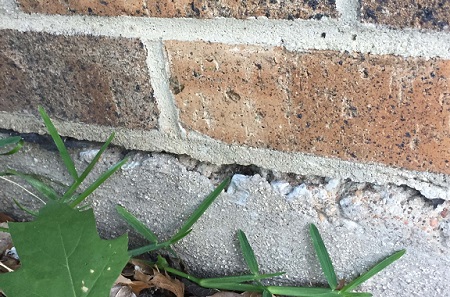What are the Types of Foundation Cracks?
Every building and home structure needs a strong foundation. It distributes vertical loads of various building materials, including occupants, into the soil. A foundation also prevents soil from moving under and around a property.
Any problem with your foundation should be cause for concern. Often, this may come in the form of cracks, which may need to be repaired depending on the severity.
Repairing foundation cracks can be costly, so it’s important first to assess the extent of the damage and then find the best way to repair it.
What do foundation cracks look like?
A year after a house or a building is constructed, a hairline crack, about the same width as a sewing thread, often appears on basement walls. These cracks can also be found near doorways, windows or corners due to normal “settling” or slight concrete shrinkage during the curing process.
However, this settlement crack should only be a cause for concern if it shows signs of expansion. You should monitor the crack and see if it is getting bigger or if new cracks are growing over the next few months. To do this, you can mark both ends of the crack with a pencil and write the date next to each mark.
Types of Foundation Cracks
To effectively repair a foundation crack, you need to identify its type. Listed below are common foundation crack types.
-
Horizontal cracks
Horizontal cracks, especially in the basement area, can be serious. These can be in both old and block foundations.
Unbalanced soil or hydrostatic water pressure may cause horizontal foundation cracks against a basement wall. The foundation may eventually cave in, allowing water to seep into your basement.
- Vertical cracks
These cracks are not as dangerous as their horizontal counterparts and do not pose any structural threat. Vertical cracks are common in foundation walls that run straight up and down and are usually the result of foundation settlement or natural concrete curing.
Still, vertical cracks in block foundations that form near corners and are wider than 1/8 of an inch indicate that there may be a problem. If vertical foundation cracks are unusually long, it’s best to contact a professional.
-
Diagonal Cracks
Most diagonal cracks can be found at most 30 degrees vertical. They are not dangerous and do not pose any threat to the structural integrity of your foundation. However, if crack growth is obvious and does not appear slow, you will need to monitor it for six months.
-
Cracks in the hairline
Newly constructed structures are more susceptible to hairline cracks in the foundation. These usually develop within a year of the foundation setting and drying. They can be repaired to maintain the aesthetics of the foundation, as your warranty may cover them.
-
Shrinkage Cracks
These are similar to hairline cracks, which develop when a concrete foundation dries out and loses moisture. Shrinkage cracks are common in new homes, which is why they are known as new construction foundation cracks.
- Stair Crack
These cracks can form along mortar joints and pose a threat to the integrity of your basement foundation. A crack in a stair may mean that the foundation settlement is sinking in an area of the structure. They can also indicate a moisture problem on the outside of your foundation.
-
Structural Cracks
These types of foundation cracks can be dangerous and may be a sign of structural deficiencies. They may initially develop from stress due to movement.
Other factors, such as soil pressure and temperature changes, can cause structural cracks. Additional reinforcement is often required to prevent crack expansion, notably by applying carbon fiber countersunk straps.
-
Foundation Slab Crack
Concrete slabs poured with concrete are susceptible to cracking over time. It can be difficult to understand why this happens, but it is likely due to either concrete curing or slab settlement.
While curing is a natural drying process for concrete, foundation disposal can be problematic. This may indicate poor artistry, soil conditions, or compacted supporting ground.
The third reason for cracks in the foundation slab is frost heaving, which often occurs during the winter. This is where the cold water below the slab freezes, causing the concrete to buckle.
- Non-structural cracks
These foundation cracks usually occur during rain storms and when the snow melts. Although there is no visible structural damage, water can seep into these cracks and cause a problem that needs to be addressed.
Cracks may not cause direct damage but may serve as entry points for leaks. In turn, these can ruin your walls and floors and promote mold growth.
-
Wet non-structural cracks
These cracks are caused by shrinkage of the foundation after the evaporation of water. They usually appear within the first month after the concrete is poured on the foundation; If there is more water in the concrete mix, the more likely it is to form the cracks.
Important achievements
Cracks on your walls can be scary at first glance because they may indicate that your home may be collapsing. However, not all cracks are serious and can only result from solid curing.
Nevertheless, foundation cracks should be addressed; They may need to be monitored and inspected to see if they are likely to cause widespread damage.
Being familiar with the different types of foundation cracks should give you a better sense of what to look for.
In particular, you should be careful of large cracks where water can seep in and cause water damage. When this happens, a restoration expert will have to come so that your ruined house can be rebuilt.
Thanks for visiting US Map of State

